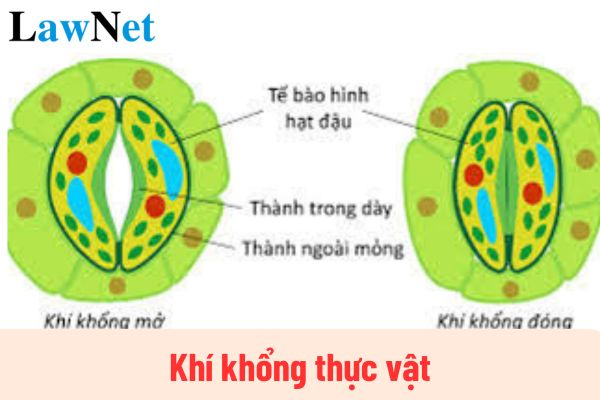What is a plant stoma? In Vietnam, what is the grade at which the plant stoma is taught?
What is a plant stoma?
plant stomas are tiny, microscopic pores located on the surface of leaves, young stems, and some other plant parts. They function like small "windows," allowing plants to exchange gases with the external environment.
Students can refer to the information about plant stoma:
|
What is a plant stoma?
|
*Note: The information about plant stomata is for reference only./.

What is a plant stoma? In Vietnam, what is the grade at which the plant stoma is taught? (Image from the Internet)
In Vietnam, what is the grade at which the plant stoma is taught?
Under section 5 of the General education program in Natural Sciences issued with Circular 32/2018/TT-BGDDT, the content of 7th-grade natural science includes:
Material and Energy Exchanges in Organisms
...
- Describe the process of energy transformation in cells, including:
+ Provide a general description of the photosynthesis process in leaf cells: State the role of leaves in photosynthesis. Define the concept, raw materials, and products of photosynthesis. Write a word equation for photosynthesis. Draw a diagram depicting photosynthesis in leaves, thus indicating the relationship between material exchange and energy transformation.
+ Apply understanding of photosynthesis to explain the practical significance of planting and protecting green trees.
+ Provide a general description of the respiration process in cells (in plants and animals): Define the concept; write a word equation for respiration showing synthesis and breakdown.
+ List some key factors affecting cellular photosynthesis and respiration.
+ Apply understanding of cellular respiration in practice (e.g., drying seeds for preservation,...).
+ Conduct experiments to demonstrate photosynthesis in green plants.
+ Conduct experiments on cellular respiration in plants through seed germination.
- Material and energy exchange
+ Gas exchange - Use images to describe the gas exchange process through leaf stomata.
- Describe the structure of stomata using drawings, stating their function.
- Using diagrams, describe the pathway of gas through the respiratory organs in animals (e.g., humans).
+ Water and nutrient exchange in organisms - State the role of water and nutrients for living organisms.
- Using diagrams (or models), describe the chemical composition, structure, and properties of water.
- Describe the process of water and nutrient exchange, using examples from plants and animals, specifically:
+ Using simple diagrams to depict the pathway of water and mineral absorption, transport in plants from the external environment to the root hair zone, into roots, up through stems, and into leaves;
+ Using diagrams, images, distinguish the transport of substances in the xylem from roots to leaves (upward flow) and from leaves to various organs through the phloem (downward flow);
+ State the role of transpiration in leaves and the action of opening and closing stomata during transpiration;
+ List key factors affecting water and nutrient exchanges in plants;
+ Conduct experiments proving stems transport water and leaves transpire;
...
Thus, according to the above regulations, 7th-grade students will learn about plant stomata.
What are the assessment methods for the 7th-grade Natural Science subject in Vietnam?
Under section 7 of the General education program in Natural Sciences issued with Circular 32/2018/TT-BGDDT, the assessment methods for the 7th-grade Natural Science subject in Vietnam are as follows:
- Assessment through written work: essay, multiple-choice, reports, etc.
- Assessment through oral interaction: oral questions, interviews, presentations, etc.
- Assessment through observation: observing students' attitudes and activities during practical experiments, group discussions, field trips, visits to scientific facilities, production centers, application of knowledge into practice, etc., using tools such as observation charts, checklists, learning portfolios, etc.

